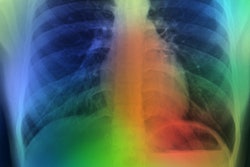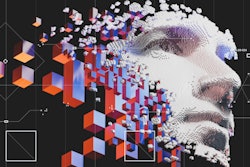
The European Society of Radiology (ESR) and the European Society of Medical Imaging Informatics (EuSoMII) have collaborated with five other radiology and imaging informatics organizations to produce a new statement calling for codes of ethics and practice governing the use of artificial intelligence (AI).
The statement, produced by representatives from the ESR, EuSoMII, the American College of Radiology (ACR), the RSNA, the Society for Imaging Informatics in Medicine (SIIM), the Canadian Association of Radiologists (CAR), and the American Association of Physicists in Medicine (AAPM), shares the organizations' vision for how ethical use of AI in radiology should promote well-being, minimize harm, and ensure the benefits and harms are distributed justly among the possible stakeholders. A draft version of the statement was published in March.
 Dr. Raymond Geis.
Dr. Raymond Geis."We believe AI should respect human rights and freedoms, including dignity and privacy," the team of authors led by Dr. Raymond Geis of the ACR Data Science Institute wrote in the final statement. "It should be designed for maximum transparency and dependability. Ultimate responsibility and accountability for AI remains with its human designers and operators for the foreseeable future."
The document details specific ethical considerations related to data, algorithms, and practice. It's now available online in the Journal of the American College of Radiology, Radiology, Insights into Imaging, and the Canadian Association of Radiologists Journal.
Time to get started
AI has much potential to yield substantial benefits in radiology, but it's a complex technology that comes with potential pitfalls and inherent biases. Widespread adoption of AI could increase systemic risks of harm, raise the possibility of highly consequential errors, and amplify complex ethical and societal issues, according to the authors. As a result, codes of ethics and practice are needed for AI.
"These codes should promote any use which helps patients and the common good, and block use of radiology data and algorithms for financial gain without those two attributes," the authors wrote. "Establishing these regulations, standards, and codes of conduct to produce ethical AI means balancing the issues with appropriate moral concern."
Achieving ethical AI will require all involved parties to want to gain trust in the technology, according to the organizations.
"To ensure the safety of patients and their data, AI tools in radiology need to be properly vetted by legitimately chosen regulatory boards before they are put into use," they noted. "This requires both radiology-centric AI expertise and technology to verify and validate AI products."
Regular updates, reassessments
The societies said that regulations, standards, and codes of conduct must be agreed upon and continuously updated. These codes of conduct must also continually emphasize transparency, protection of patients, and vigorous control of data versions and uses, they said. Furthermore, continuous monitoring for unintended consequences and loss of quality must also be performed following implementation, with protocols in place for determining causes and implementing corrective action, according to the organizations.
In addition to considering the ethics of AI in radiology now, the authors believe it'll be important to regularly reassess this topic.
"New ethical issues will appear rapidly and regularly, and our appreciation of them will change over time," they stated.
The authors emphasized that radiologists will remain ultimately responsible for patient care and will need to acquire new skills to do their best for patients in the new AI ecosystem.
"The radiology community needs an ethical framework to help steer technological development, influence how different stakeholders respond to and use AI, and implement these tools to make best decisions and actions for, and increasingly with, patients," the authors wrote. "We hope that this statement clarifies the core principles upon which this framework ought to be based in each community."
Increasing awareness
Developments in AI represent one of the most exciting -- and also most challenging -- changes in how radiology services will be delivered to patients in the near future, according to co-author Dr. Adrian Brady, chairperson of the ESR's Quality, Safety and Standards Committee.
 Dr. Adrian Brady. Image courtesy of the ESR.
Dr. Adrian Brady. Image courtesy of the ESR."The potential for patient benefit from AI implementation is great, but there are also significant risks of unexpected or unplanned harmful effects of these changes," he said in a statement. "It's incumbent on professionals working in this area to ensure that patient and public benefit and safety are paramount."
EuSoMII president Dr. Erik Ranschaert, PhD, said that radiologists need to be well-informed about AI tools, not only about the advantages they can offer to improve their service to patients, but also about the potential risks and pitfalls that might occur during implementation.
"This paper is therefore an excellent basis to improve their awareness about the potential issues that might arise, and should stimulate them in thinking proactively on how to answer the existing questions," he said.



















